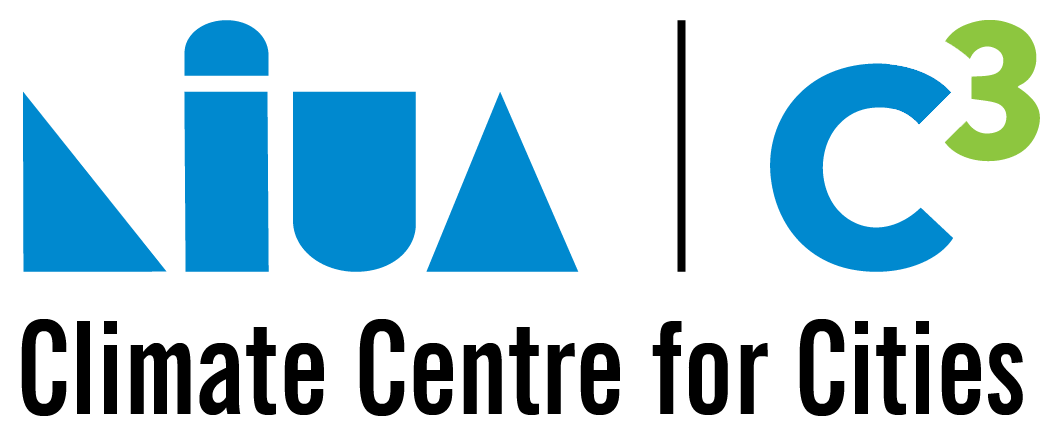Impacts of a changing climate on water resources – consequences for Indian cities
Published On:
Wednesday, September 1, 2021
Cities and water crises
As summer days advance, many a city in India grapples with a recurring annual crisis, a trend becoming more visible with each passing year. Every summer, residents in many Indian cities brace themselves for a combination of extreme heat and water shortage. Desperate residents jostling around water trucks seeking to fetch buckets for everyday water needs are frequent sights across cities in the country.
The 2019 Chennai water crisis, which paralysed the city's water delivery infrastructure, is a good example. It is, in fact, a red flag for other cities. Chennai, a megacity with a population of 8.6 million people, struggled to meet its residents' daily water needs of 830 MLD (Sujith Sourab Guntoju 2019). So, how did the city end up in this predicament? It couldn't possibly have been merely due to a single delayed Monsoon rainfall. Several accounts appear to show that various factors contributed to the crisis. The Chennai water crisis was not an isolated incident; numerous other Indian towns have recently experienced similar disastrous water problems. And the future does not appear too promising either for the cities as several water assessment reports and projections depict a bleak prospect for many Indian cities.
A recent report by the National Institute for Transforming India (NITI) Aayog – a government think tank – predicted that 21 cities, including Delhi, Bengaluru, Hyderabad, and Chennai, would run out of ground water by 2030, affecting 100 million people and, more alarmingly, 40 percent of India's population would be without access to drinking water, indeed a frightening prospect (NITI Aayog 2018).
So, what is causing water crisis in Indian cities? Is it poor water management, rapid urbanisation, pollution, waste, or a changing climate and variable monsoon rainfall pattern?
What is causing water crises in Indian Cities?
Water scarcity in Indian cities is caused by a variety of factors, but climate change may be the most important element that exacerbates and accelerates the crisis. The rapid rate of unplanned urbanisation, which has resulted in the disappearance of many water bodies - vital supplies of drinkable water for cities - is one of the key causes of water crises in Indian cities. 6000 lakes and reservoirs once existed in Chennai and its two neighbouring districts – Kancheepuram and Tiruvallur – collectively known as the ‘Yeri (lake in Tamil) districts (Hegde 2019). However, the conversion of these water bodies into residential flats and housing colonies has resulted in the loss of 2104 water bodies.
Large-scale in-migration to urban areas is a major driver of rapid urbanisation. According to the National Commission on Population in India's projections, roughly 38.6% of Indians (600 million) would live in cities in the next 15 years, i.e., by 2036 (AIJAZ 2021), putting strain on urban infrastructure, particularly water resources. According to a recent estimate by the World Wide Fund for Nature, 30 Indian towns would face a "severe water risk" by 2050 due to rapid population growth (Bhatia 2020). In addition, water pollution and waste are two more factors that contribute to water scarcity in cities.
Industries and municipalities release untreated effluents into rivers and other water bodies, contaminating both surface and ground water. As per the National Institute of Urban Affairs’ ClimateSmart Cities Assessment Framework 2.0 (CSCAF2.0), Cities Readiness Report, 2021, of the 126 cities that participated in the assessment, only 40 cities were found to recycle and reuse around 20% of their waste water (NIUA 2021). According to a recent research by NITI Aayog, approximately 70% of India's water is contaminated, affecting three out of every four individuals (NITI Aayog 2018). During the year 2020, supply water samples from 21 cities around the country failed to meet the required criteria (Deka 2021). Large volume of water is lost due to aging, corroded and leaky pipeline Infrastructure (Temple 2019). As per the CSCAF2.0 Cities Readiness Report, only 24 cities out of the 126 cities assessed, conducts water audits to assess water losses during distribution while all cities in the hills and coastal regions are yet to initiate any measure to in this regard.
Furthermore, due to indiscriminate groundwater extraction, water tables in most Indian cities are fast declining. According to a research by the Centre for Science and Environment, groundwater supplies 48 percent of India's urban water supply, and groundwater levels have declined significantly in seven of the country's ten most populated cities during the last two decades (Deka 2021).
Chennai city’s water crisis of 2019
Chennai, India's megacity with a population of 8.6 million people, experienced one of the greatest water crises in its history in 2019. All of the city's major water supply reservoirs, including Poondi, Cholavaram, Redhills, and Chembarambakkam, dried up. In the peak of the crisis, the Chennai Metro Water Supply and Sewage Board could supply only about 525 Million Litres a Day (MLD) as against a demand of 830 MLD (Sujith Sourab Guntoju 2019).
Most convenient explanation is to blame the usual suspect, climate change, for the crisis; however, careful analysis reveals that a set of diverse factors resulted in the crises. Rapid urbanisation in the peri-urban areas, fueled by population growth and unlawful encroachment, consumed vital water bodies, which were also key sources of ground water recharge (Hegde 2019). Following the 2015-16 monsoon season, the city's share of monsoon rainfall has been in deficit, with a deficit as high as 40% of normal monsoon rainfall in 2019, resulting in a decline in ground water recharging capacity and reservoirs struggling to fill up (Sujith Sourab Guntoju 2019).
The city over extracted ground water, at times by more than 1.85 times the permitted rate. Apart from this there has been a steady decline in potable ground water due to salt water intrusion. And the city did not fully implemented its rain water harvesting program for tapping surface run off and ground water recharging (Hegde 2019).
Observed impacts of climate change on water crises in Indian cities?
Summer monsoon precipitation over India has decreased by 6% from 1951 to 2015, according to a research report by the Ministry of Earth Science of the Government of India, with major drops over the Indo-Gangetic Plains and the Western Ghats (Ministry of Earth Science 2020). Climate variability has been disturbing the quantity and frequency of rainfall across the country in recent years, resulting in water shortages in various regions and cities. A lack of monsoon could result in less groundwater recharge and reservoirs struggling to fill. The 2019 water crises in Chennai, which was caused by a number of factors, is a classic example of water crisis driven by climate extremes; onset events, and climate variability.
Will climate change further complicates water crises in Indian cities?
In its 5th Assessment Report, the Intergovernmental Panel on Climate Change warned that changing climate system is expected to reduce raw water quality and pose risks to drinking water quality. The report also stated that increased global warming will exacerbate its effects on sections of population currently suffering from drought and flooding (Inter Governmental Panel on Climate Change 2014). In 2019, the London-based risk analytics firm Verisk Maplecroft categorised India as ‘high risk' in its “Climate Change Vulnerability Index” report, implying that climate change consequences such as a ‘extended dry season' would exacerbate problems in many Indian cities (Dua, India’s large cities staring at water crisis: Water Stress Index 2019).
Furthermore, it projected many major Indian cities experiencing a higher number of consecutive drought days when precipitation is less than 1 mm. Bengaluru, for example, is anticipated to see a 5% rise in consecutive drought days by 2060, compared to the period 1981 to 2005.”
However, on the other hand, according to most other climate change projections, including Indian Institute of Tropical Meteorology, the hydrological cycle is expected to become more intense while annual average precipitation increases in India, though regional and seasonal patterns will vary sharply (Ministry of Earth Science 2020). The rising temperature could intensify melting of Himalayan glaciers in the coming decades. A rising global average temperature coupled with intensive monsoon rainfall will see increase cases of flash flooding across 78 urban area in India as per a paper published in the Geophysical Research Letters in 2018.
So what is the way forward for our Indian cities?
As a way forward, what cities including Chennai can do is to adopt specific approach as per their existing water challenges, future demand and their geo-climatic conditions.
For city like Chennai, the city government could strictly monitor implementation of rain water harvesting program which it initiated following the drought of 2001-2003 for conserving surface runoff and significantly replenish ground water. It could invokes provisions of Wetlands (Conservation and Management) Rules, 2017 to prohibit conversion of water bodies such as lakes and ponds into development spheres. It needs to continuously regulate and monitor ground water extraction especially along its coastal areas for preventing sea salt water intrusion.
Cities across the country can formulate plans and strictly implement them to promote recycling & reuse of wastewater for different purposes; including industrial use, landscaping, and gardening etc.
Cities with aging water supply infrastructure should take measures to enhance efficiency of their distribution network. In many cities, water losses during distribution are common place and in few cases, this loses could be as high as 40% of supplied water as observed in Delhi. Beside this, city authorities can take steps to prevent unlawful taping or pilferage of water during distribution. Cities can conduct water audit to assess water loss and continuously monitor the leakages and loss of water in the existing water supply system and focus on reducing the percentage of loss.
Generate public awareness coupled with tax incentives and technology interface to promote water use efficiency and conservation. Cities can introduce scheme like water credit to provide tax incentives for water use efficiency and recycling. And introduce technology like water app, with interactive features like; tips on water saving, reports leakage or sends updates on water quality etc.
References
AIJAZ, RUMI. 2021. "Managing India’s urban transition in 2021." Observer Research Foundation. Jan 4. Accessed August 4, 2021. https://www.orfonline.org/expert-speak/managing-india-urban-transition-2....
Bhatia, Swati. 2020. "WWF identifies 100 cities, including 30 in India, facing ‘severe water risk’ by 2050." Down to Earth. November 3. Accessed July 27, 2021. https://www.downtoearth.org.in/news/water/wwf-identifies-100-cities-incl....
Deka, Kaushik. 2021. "India's urban water crisis: Cities at risk of running out of water." India Today. March 20. Accessed July 28, 2021. https://www.indiatoday.in/magazine/nation/story/20210329-the-cities-of-w....
Dua, Shubhangi. 2019. "India’s large cities staring at water crisis: Water Stress Index." The Hindu. July 31. Accessed August 9, 2021. https://www.thehindu.com/news/cities/mumbai/indias-large-cities-staring-....
—. 2019. "India’s large cities staring at water crisis: Water Stress Index." The Hindu. July 31. Accessed July 27, 2021. https://www.thehindu.com/news/cities/mumbai/indias-large-cities-staring-....
Hegde, Swati. 2019. "Climate change is not the only reason to blame for India’s Chennai water crisis." The Water Center. July 23. Accessed July 28, 2021. https://watercenter.sas.upenn.edu/climate-change-is-not-the-only-reason-....
Inter Governmental Panel on Climate Change. 2014. Climate Change 2014 Impacts, Adaptation and Vulnerability , A summary for Policymaker. Scientific assessment, IPCC.
Ministry of Earth Science. 2020. "Assessment of climate change over the Indian region: A report of the Ministry of Earth Sciences (MoES), Government of India." Relief Web. June 17. Accessed June 17, 2021. https://reliefweb.int/report/india/assessment-climate-change-over-indian....
NITI Aayog. 2018. Composite Water Management Index. Assessment Report, New Delhi: NITI Aayog.
NIUA. 2021. ClimateSmart Cities Assessment Framework 2.0 Cities Readiness Report . Assessment Report, New Delhi: NIUA.
Sujith Sourab Guntoju, Mohammad Faiz Alam, Alok Sikka. 2019. "Chennai water crisis: A wake-up call for Indian cities." Down to Earth. August 5. Accessed August 5, 2021. https://www.downtoearth.org.in/blog/water/chennai-water-crisis-a-wake-up....
Temple, James. 2019. "India’s water crisis is already here. Climate change will compound it." MIT Technology Review. April 24. Accessed July 28, 2021. https://www.technologyreview.com/2019/04/24/135916/indias-water-crisis-i....
Contact Us
1st and 2nd Floor, National Institute of Urban Affairs
India Habitat Centre Lodhi Road New Delhi-110003
Please Call Help Desk at 011-411-86699
Monday - Friday, 9:00 AM - 5:00 PM
Please write to us at c-cube@niua.org







Post a Comment